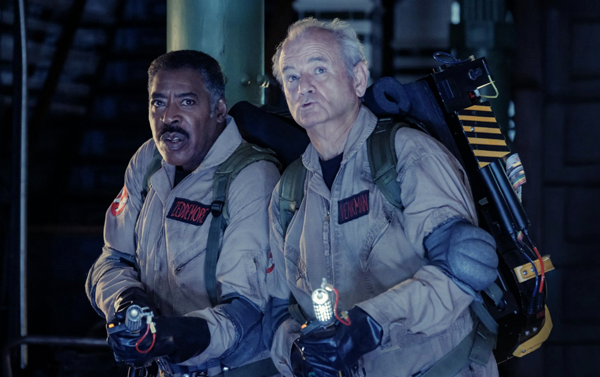
Whereas Ghostbusters (2016) veered too far in a “new” direction, and Ghostbusters: Afterlife (2021) veered even harder in the “legacy” direction, feeling grossly reactionary and emotionally predatory—all but literally digging up Harold Ramis’ corpse in a cheap ploy for your money and your tears—Ghostbusters: Frozen Empire at least figured it out: the banal balance between appealing to nostalgia-heads and reaching a new audience by creating a new legacy, the nostalgia for which can be mined by the corporate memory mongers in another 40 years or so.
The fifth film bearing the Ghostbusters title finds the new quartet of phantom police in an old and familiar location: New York. After the Spengler family saved the world in Oklahoma, they followed their namesake’s legacy back to the NY firehouse where they continue to wrangle specters while trying not to destroy the city in the process. William Atherton is back, no longer with the “evil” EPA but now as the mayor, not so much as a statement against governmental overreach endangering those it’s meant to protect, but more because, “hey, remember him?” Other “legacy” characters return, shoehorned in with varying degrees of grace, the least of which being Annie Potts’ Janine Melnitz and Bill Murray’s Peter Venkman.
The ball really gets rolling when newcomer to the franchise Kumail Nanjiani brings a haunted bocce ball to Ray Stantz’s (Dan Aykroyd) paranormal oddities shop. Inside is a villain-of-the-week, Gubar or some such, a ghost that can not only control the powers of frost (!) but can also command other ghosts to do its bidding. Thankfully, the film shows restraint with Gulgub, or whatever, by not revealing him until the final act, allowing for some semblance of rising stakes and intrigue. Patton Oswalt shows up briefly as a librarian to exposition-dump Grognog’s history.
If my tone is a little flippant, it’s because I’m having more fun writing about Frozen Empire than I did watching it. However, it’s not all doom and gloom. Nanjiani is a standout, and his interactions with Dan Aykroyd garner the biggest laughs of the movie (these used to be comedies, remember?). The inclusion of James Acaster is a welcome one as well, playing a lab techie at Winston Zeddemore’s (Ernie Hudson) ghost research company. Both of these plot threads feel more interesting and fruitful than the rest, but get short shrift because every movie has to have a “heartfelt” family drama at its core. In fact, some of the best parts are when the Spengler family and step-dad Gary (Paul Rudd) aren’t apprehending apparitions, or settling squabbles, but instead just shooting the spit at the firehouse.
I think that’s what these new movies forget. The appeal of Ghostbusters (1984)—and to some, Ghostbusters II (guilty)—is the goofy interplay between the four leads; the spirit snatching comes secondary.













